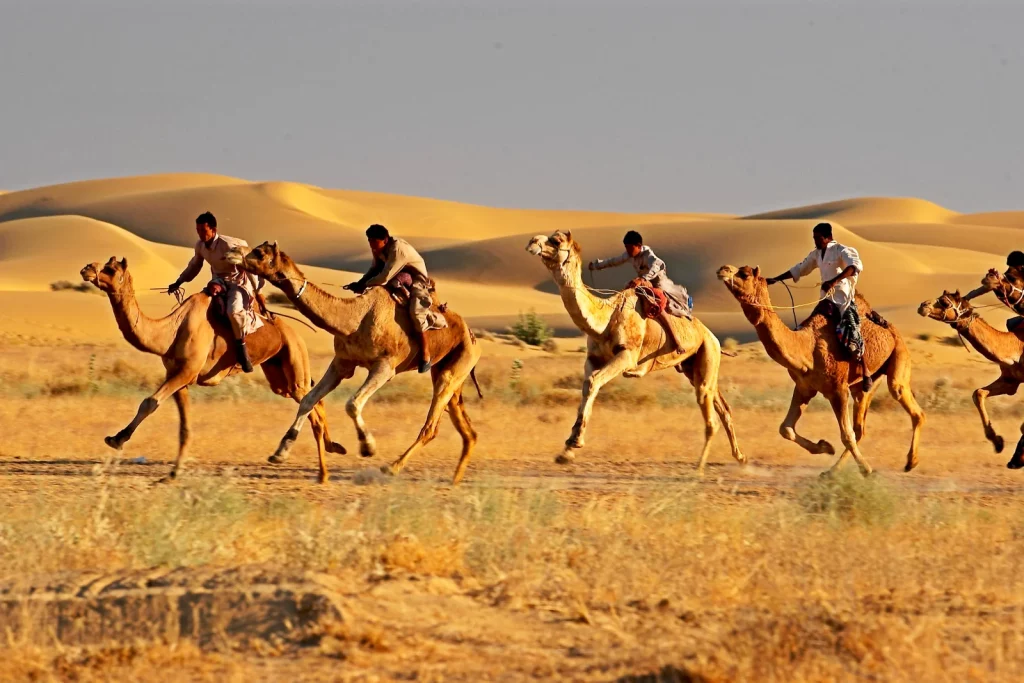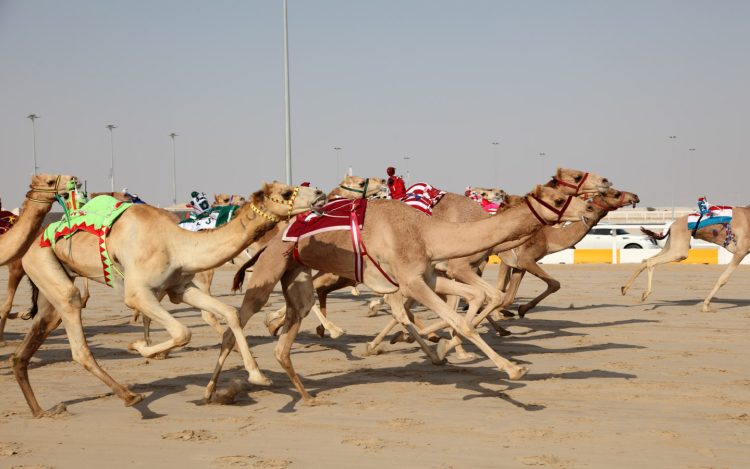Introduction: A Celebration of Culture and Speed
In the cooler embrace of winter, the desert transforms into a vibrant arena for camel racing, a beloved tradition across the Arab world. This exhilarating sport transcends mere competition, embodying the rich tapestry of Arab history and culture. Recent reports from Egypt and other Gulf nations reveal a burgeoning number of events, inviting audiences to witness the incredible speed and agility of camels galloping through the sands, harmonizing the rhythms of nature and humanity.
A Glorious Dawn in Ismailia
As the first rays of the sun break through the night, the vast desert landscape is painted in hues of golden brown. In the eastern Egyptian city of Ismailia, a racetrack emerges amidst the undulating dunes, marked by colorful flags fluttering in the gentle breeze. The sandy path stretches for miles, framed by powerful 4WD vehicles parked close to the track. Crews set up cameras atop these vehicles, prepared to capture the sweeping motion of the camels as they race.
The spectators, a blend of local enthusiasts and curious travelers, gather around, laying colorful blankets on the ground. They clutch steaming cups of traditional red tea, eagerly engaging in spirited discussions about their favorite competitors, setting the stage for the thrilling spectacle to come.
The Elegant Competitors: Camels in Their Glory
As the camels make their grand entrance, spectators can’t help but marvel at their majestic forms—long legs, graceful necks, and a poised demeanor. Each camel is a masterpiece of grooming, adorned with vibrant fabrics and jingling bells that dance with every step. The resonant melody of the bells seems to orchestrate an exciting prelude to the impending race, setting the atmosphere ablaze with anticipation.
With a sharp whistle from the referee, the race begins. The air is filled with the rush of hooves and the sight of clouds of sand rising in a breathtaking whirlwind. The camels gallop with unmatched speed, their legs moving in a rhythm that echoes the pulse of the desert, their humps undulating like waves on a golden sea.
The Thrill Outside the Track
The excitement is palpable beyond the confines of the racetrack. Off-road vehicles race alongside the camels, creating a dynamic contrast between man and nature. Behind the lenses of cameras, operators capture stunning moments while the crowd erupts with cheers, blending the dust from both vehicles and camels. This fusion creates a mesmerizing spectacle of light, shadow, and sound, weaving together the essence of competition.
As the camels cross the finish line, a wave of exhilaration envelops the arena. The winning camel stands proud, consciously aware of its achievement as the judges drape it with elegant banners and adorn it with flowers. Amidst the cheers, the owner embraces and praises their loyal partner, celebrating their shared journey and victory.

The Swift and Stalwart Dromedaries
Contrary to their leisurely strolls in tourist attractions, camels showcase astonishing speed when racing. Locals disclose the surprising fact that, when motivated, these dromedaries can reach speeds exceeding 60 kilometers per hour—comparable to a mid-speed automobile.
The excitement can be overwhelming for spectators who find it impossible to keep pace on foot. Instead, they hop into their off-road vehicles, mirroring their favorite camels’ strides while fueling the competitive spirit with cheers and encouragement.
The racing camels are predominantly single-humped dromedaries, known for their combination of speed and endurance. The process of selecting contestants is nothing short of an art form—ideal candidates boast slender bones, long limbs, and well-toned muscles. Trainers carefully observe their performances in sandy terrain, assessing flexibility and agility. Training typically begins as early as two years old, focusing on building physical prowess and mental resilience. Maintaining composure under pressure is essential; hence, riders build trust with their camels through countless morning runs together.
Innovations in Racing: Adapting to Change
During the races, the riders—usually children due to their light weight and agility—coax the camels forward, minimizing interference. However, the inclusion of young foreign jockeys has sparked controversy, prompting a shift towards robot riders in recent years. These technological marvels are securely mounted on the camels, controlled remotely to execute commands, while owners manage speed and direction through sophisticated devices.
The Growth of the Racing Industry
Camel racing in Egypt boasts a variety of prestigious events, such as the Ismailia International Camel Festival and the Matrouh-Alamein Camel Race, while neighboring countries host their own competitions like Saudi Arabia’s “Kingdom Cup” and Qatar’s “Camel Festival.” Each event attracts thousands of participants and spectators annually, fostering cultural exchange and providing a boost to the camel economy. This flourishing industry supports every aspect, from selection and training to decoration and races, forming a complete cycle of celebration.
Reflecting on the vibrancy of camel racing in the Ismailia desert, one is reminded of a Bedouin proverb: “Every grain of sand in the desert carries a story of camels.” As modern civilization evolves, camels continue to gallop across the sands, embodying the legacies of ancient cultures while forging new narratives in the tides of time.





















